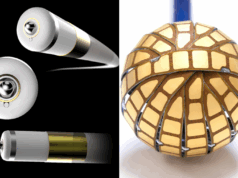
Biosense Webster has announced that the first cases have been performed using the investigational Omnypulse catheter as part of the Omny-IRE clinical trial. The first procedures were performed by Mattias Duytschaever at AZ Sint-Jan Hospital in Brugge, Belgium.
The Omny-IRE clinical trial is a pivotal, prospective, multicentre, non-randomised study that will enrol 135 patients in Europe and Canada to evaluate the safety and effectiveness of the Biosense Webster Omnypulse platform, the principal components of which are the Omnypulse catheter and the Trupulse generator. The study will evaluate the platform for the mapping and treatment of symptomatic paroxysmal atrial fibrillation (AF) during standard ablation procedures.
“Our goal at Biosense Webster is to enable electrophysiologists to deliver the best possible patient outcomes with catheter ablation; two critical components for this are integrated mapping and a versatile portfolio of tools that can address a range of workflows and patient anatomies,” said Jasmina Brooks, President, Biosense Webster. “We are working to bring forward a diverse suite of best-in-class PFA tools – including loop, focal, and large focal catheters – designed to be fully integrated with our CARTO™ 3 System to enable real-time catheter visualization with a low-fluoroscopy workflow.”
The investigational Omnypulse catheter is a large-tip, 12mm catheter with Carto 3 system integration that is designed with contact force feedback and enhanced mapping capabilities. The investigational Trupulse generator provides a bipolar, biphasic pulse sequence to the catheter’s twelve electrodes during cardiac ablation. The Omnypulse platform is designed to enable AF treatment strategies with a single device that combines a large ablation area with the ability to create high-density maps.
“In the cases I performed as part of the Omny-IRE trial, the contact force data from the Omnypulse catheter aided the initial map creation in the Carto 3 system, and the integrated PF Index module allowed me to correlate my ablation parameters with the lesion creation,” said Mattias Duytschaever. “I am excited about the potential for versatility and personalisation of this system, and what this means for patients.”
Catheter ablation is a minimally-invasive procedure performed by an electrophysiologist to treat heart rhythm disorders, including AFib, by interrupting irregular electrical pathways in the heart by delivering either heat (Radiofrequency ablation) or cold (Cryoablation). PFA represents a new approach to treating AFib, utilizing a controlled electric field to selectively ablate cardiac tissue that causes the irregular heart beat through a process called irreversible electroporation (IRE). Because the pulsed field energy is minimally thermal, IRE offers the potential to reduce the risk of damage to surrounding tissues including esophageal, pulmonary vein, and phrenic nerve injury.2
“Mapping integration is critical in the treatment of AF, especially with pulsed field energy, in order to provide immediate feedback on patient anatomy and appropriate treatment location. The ability to make optimal, patient-tailored treatment decisions with the help of an integrated solution that allows us to both evaluate and treat is of tremendous value to the EP community,” added Duytschaever. “I am eager to expand our knowledge in the rapidly advancing field of PFA with the Omny-IRE trial.”









